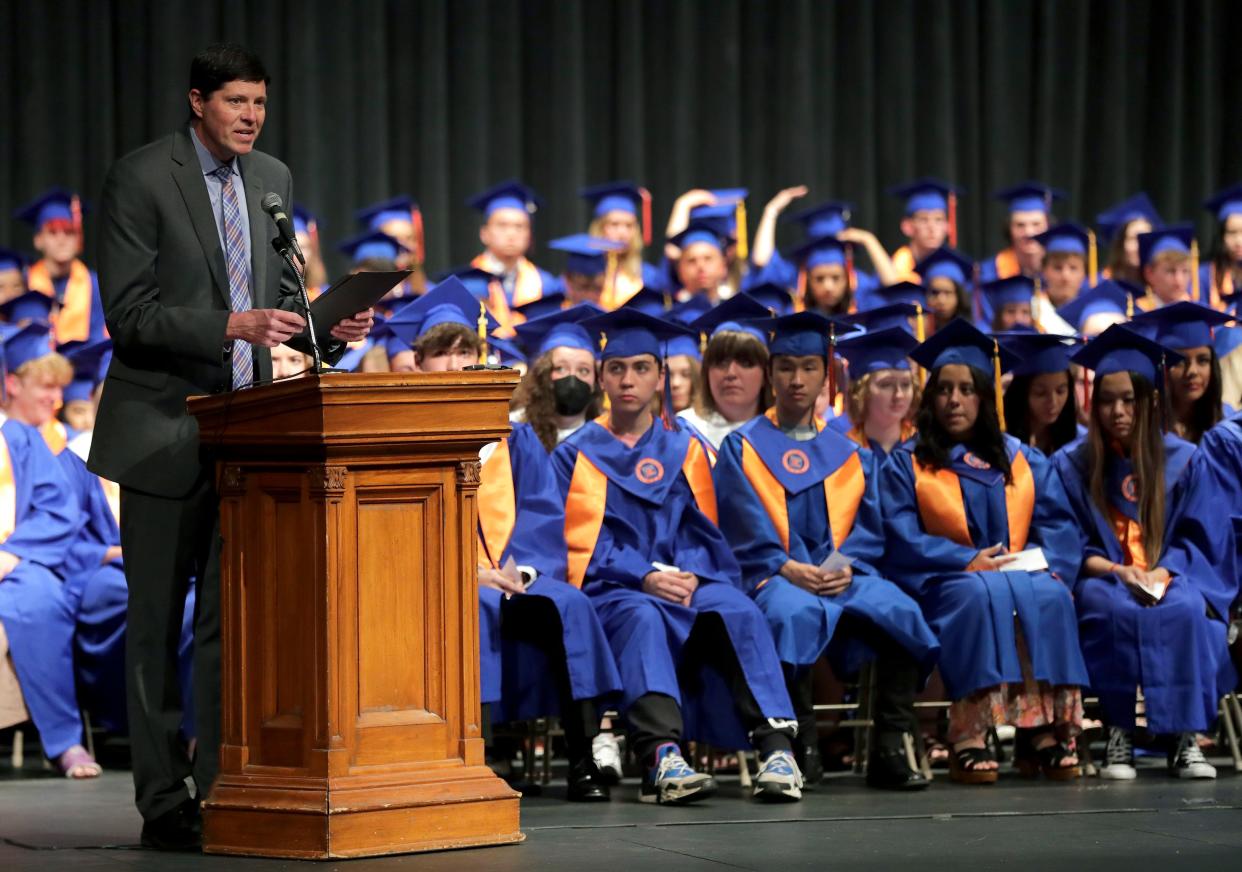New FAFSA financial aid forms for college are coming. Here's what Wisconsin families should know

The financial aid form that incoming and current college students file annually is getting a major facelift.
But it's been delayed by several months, sparking worries among education experts that the tighter timeline to complete it means some students will miss out.
Filing the Free Application for Federal Student Aid, or FAFSA, is an important step in the college planning process because it determines eligibility for federal grants, loans, scholarships and work-study funding.
Here's what to know:
What's changing on the new FAFSA form?
The form will be much shorter than in the past — just 36 questions compared to 108.
The simplified form also provides increased transparency around eligibility for federal Pell grants, which are given to students with the most financial need. It also allows students to transfer tax data directly from the IRS.
The form also creates more direct routes for high schools to support students with special circumstances, such as refugees, those facing parental abandonment and children of parents who are incarcerated.
More Wisconsin students will benefit under new form
Beyond being easier to fill out, the new form also reflects updates to student aid calculations. It will extend Pell grants to nearly 10,000 more Wisconsin students, according to U.S. Department of Education data.
In addition, 20,000 more Wisconsin students are expected to receive the maximum Pell grant, meaning they will receive more money to offset the cost of their education.
One student group, however, may suffer under the new formula: the children of families who own farms.
Many farm families have high reported assets, like farmland and equipment, but low incomes. The old formula counted a family’s income off that land, but not its net worth on paper.
But the new formula does, making many farm families appear wealthier than they are. For example, a family with an adjusted gross income of $60,000 and a farm worth $1 million would previously be expected to contribute $7,626 annually for college. But under the new formula, the family contribution would be $41,056 annually, according to a report from the Iowa Student Aid Commission, the state’s student financial aid agency
When will the new FAFSA be available?
The U.S. Education Department said the new form will be launched by Dec. 31 — three months later than when the FAFSA used to be released on Oct. 1.
The compressed timeline will have downstream effects on the financial aid process.
Schools will begin receiving aid eligibility information by the end of January, the department said. That means students and families will receive their aid offers later, leaving them less time to decide which college to enroll in and put a deposit down by the May 1 deadline.
The shorter schedule “could result in lower FAFSA completion and college enrollment rates than in previous years,” the National College Attainment Network warned in a statement last month. The nonprofit aims to close equity gaps in higher education.
The delay will most affect students from low-income backgrounds because they must wait for their aid offers to confirm they can afford college, the organization said. It comes during an already complicated admissions cycle due to the U.S. Supreme Court ruling restricting the use of race in admissions decisions.
"This is a year of massive change and on top of that, a shorter window of time to complete the form," said Kim Cook, who leads the organization.
What are Milwaukee Public Schools doing for students?
Ericca Pollack, college access coordinator for Milwaukee Public Schools, called the new form "worth the wait."
"We're extremely prepared to support students" through the switch, she said. MPS schools have been prepping over the past year for it.
FAFSA completion events will be held in the district's two dozen traditional high schools in January and February, Pollack said. MPS college and career center advisers will be fully focused on FAFSA during that time.
"We certainly would prefer a longer timeline," said John Hill, director of the College and Career Readiness department for MPS. "There’s no doubt about that ... But we feel we have a very good plan in place to ensure they get their FAFSA done."
MPS requires FAFSA completion to graduate
Adding to Hill's optimism is FAFSA completion data from last school year, the first in which MPS made the form a graduation requirement.
In the year before FAFSA was made mandatory, 50% of MPS students filled it out. In 2022-23, it jumped to 62%.
The goal of the graduation requirement, Pollack said, is to kick-start conversations about college. Families can choose to opt out of the form after meeting with a career counselor.
"The goal is to have a conversation to make sure they do not foreclose on college because of perceived financial barriers," she said. "We just want to make sure families are informed about all college options."
What should students and families do now?
Create your Federal Student Aid ID, also called FSA ID. Visit studentaid.gov/fsa-id/create-account/launch.
The process only takes about five minutes, but it can take four to five days for approval. By creating the account now, you can file the new form as soon as it becomes available.
Hang on to the username and password you create. The same log-in will be used to file the FAFSA annually and will also apply to other children in the family.
Parents who lack a Social Security number cannot complete this step until the new form becomes available.
For more information, visit mpsmke.com/FAFSA.
Contact Kelly Meyerhofer at kmeyerhofer@gannett.com. Follow her on Twitter at @KellyMeyerhofer.
This article originally appeared on Milwaukee Journal Sentinel: What Wisconsin families should know about new FAFSA form
